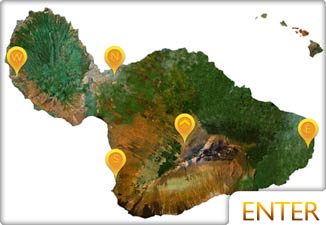Maui > Nature > Invasive Species

Invasive Species
Invasive Species are non-indigenous species that invade native habitats causing negative effects to the area environmentally, economically, and/or ecologically.
These non-native plants and animals were brought to the islands either intentionally or by accident by air or sea. Learn more about some of these species:
• Coqui Frogs
• Little Fire Ants
• Nettle Caterpillar
• Ohia Rust
• Varroa Mites
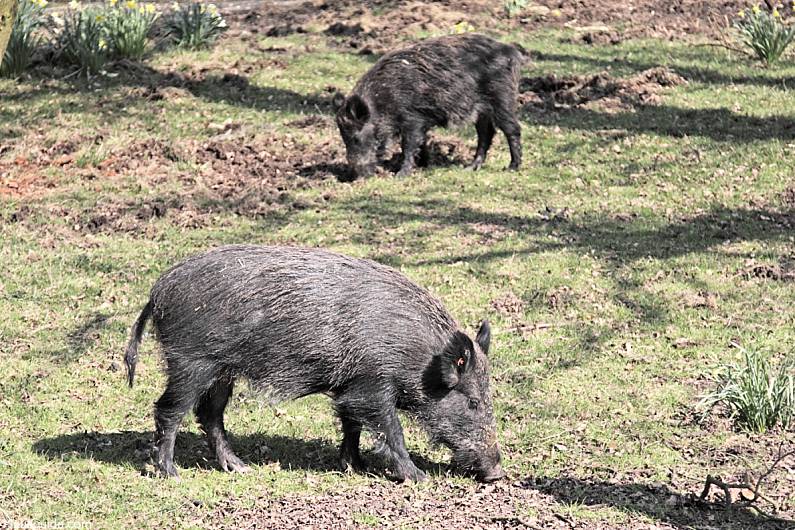
Intentional Invasion
A few examples include Mongooses, Deer, and Eucalyptus Trees.
Hawaii Invasive Species
Mongoose
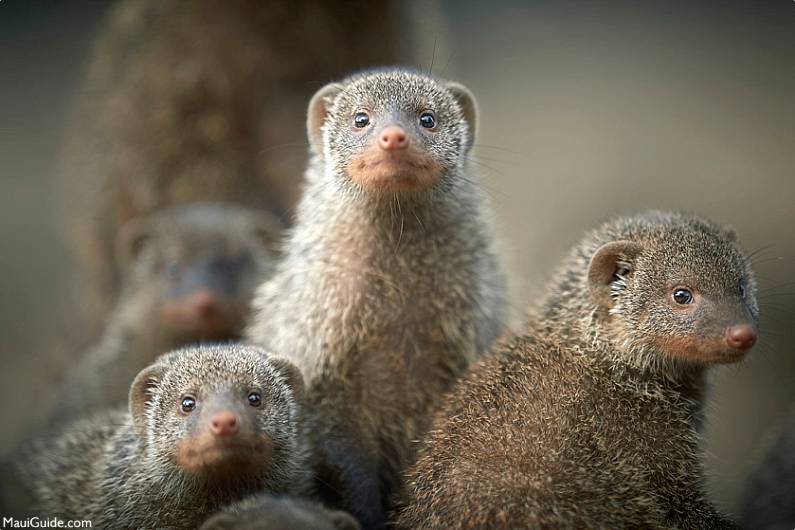
In 1883, 72 Mongooses were brought over to Hawaii in an ill attempt to curb the rat population. Unfortunately, whoever made the decision to bring them over didn’t do their homework. Rats are nocturnal and Mongoose hunt during the day. They do eat rats, but not enough to control the population. They also eat ground-nesting birds and their eggs. They’ve completely wiped out Newell’s shearwaters and nearly caused the Nene Hawaiian Goose to go extinct. Mongooses can carry leptospirosis, which is a disease that can be lethal to humans. It is transmitted through the urine that runs into ponds and streams.
Axis Deer
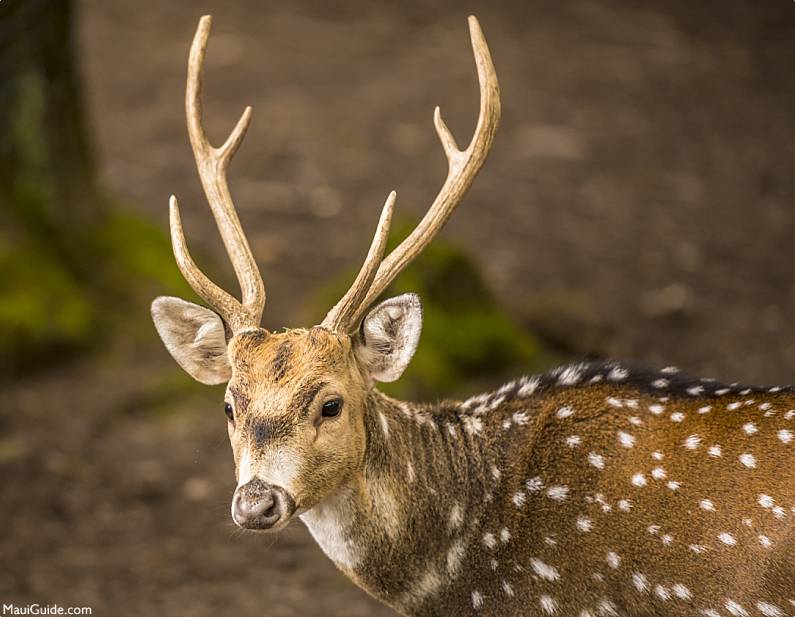
In 1959, 9 Axis Deer were brought to Maui for hunting. They felt that this type of deer had a low potential for breeding. As of 2010, the population is estimated at 20,000 due to their not having natural predators on the island. Though cute, these deer are responsible for destroying much of Lanai’s dryland forests. They also pose an economic threat to golf courses due to grazing. This is why hunting deer is so popular on Maui.
Eucalyptus Trees
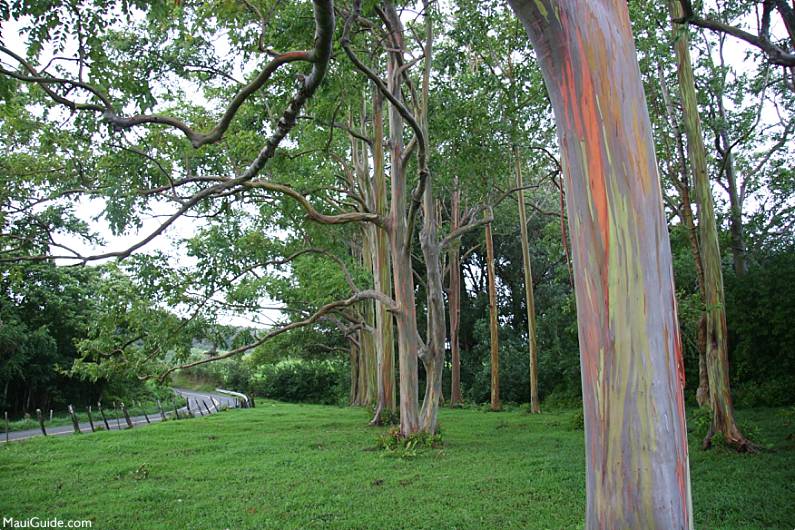
In 1870, the first Eucalyptus trees were planted on Maui. Though beautiful and pleasingly aromatic, Eucalyptus Trees are virtual monocultures, which choke out almost all other native plant life like a weed.
Unintentional Invasion
It’s easier than you’d think for people to unknowingly bring invasive species to Hawaii. It can be as simple as having some dirt on your shoe with some seeds in it. Or some new species could get past inspection on the cargo containers. This is why Hawaii is so strict in forbidding visitors to bring fruit or vegetables into the State.
Potential Invasive Species
Snakes

Maui is lucky in that we haven’t had snakes introduced here. Well, that’s not entirely true. We do have 1 snake, but it’s more like a worm. The Ramphotyphlops braminus blind snake is harmless and often mistaken for a common earthworm. There is potential for the Brown Tree Snake to be introduced, which is already a problem in Guam (let’s hope it doesn’t happen.)
Here are some more plants and animals targeted as Maui Invasive Species.
Ivy Gourd (Coccinia grandis) – Vine
Area of Concern – South, West, Upcountry, Central Maui
• Five-petaled white flowers and oblong, red fruits.
Ivy gourd attacks shrubs, trees, fences, and telephone poles. If left unchecked, ivy gourd can form a dense canopy that quickly smothers out its hosts under a solid blanket of vines.
Giant Reed (Arundo donax) – Grass/Sedge
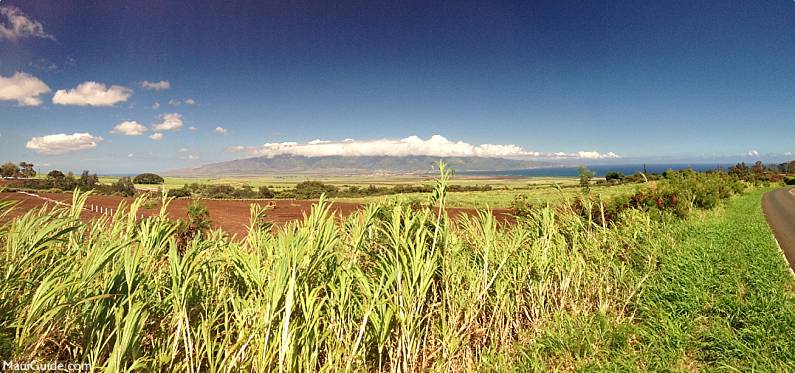
Area of Concern – South, Upcountry, Central Maui
• Erect, cane-like grass.
• Grows to 20 feet tall.
• Rootstocks form compact masses.
Giant reed spreads quickly by root pieces in dirt or waterways. It traps sediments and blocks streamflow, leading to erosion and flooding. Once established, giant reed forms dense stands that choke out native plants and alter waterbird habitat.
Fountain Grass (Pennisetum setaceum) – Grass/Sedge
Area of Concern – South, Upcountry, Central Maui
• Cylindrical leaves grow in a dense clump up to 4 feet tall.
• Purplish flower heads.
Fountain grass is drought and fire-resistant. Seeds are spread by the wind, animals, vehicles, and people. Fountain grass fuels wildfires, damaging plants not adapted to fire.
Coqui Frogs (Eleutherodactylus coqui) – Frogs
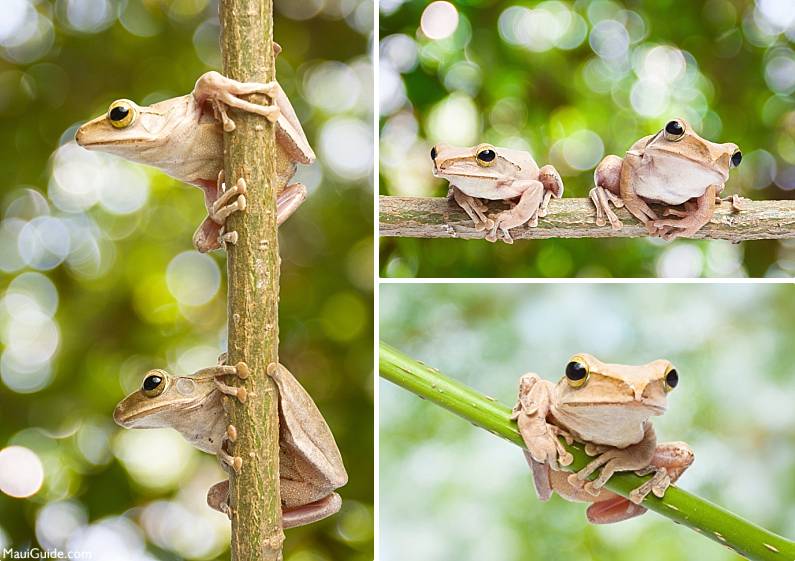
Area of Concern – South, West, East, Upcountry, Central Maui
• Rounded body, up to 2 inches long.
• Males emit loud two-note calls at night.
Coqui can reach densities of 10,000 individuals per acre, consuming large numbers of insects (not mosquitoes!). Maui’s forest birds depend on native insects for food. The coquis’ loud call affects plant retailers, hotel businesses, and real estate transactions.
Rubber Vine (Cryptostegia Grandiflora) – Vine
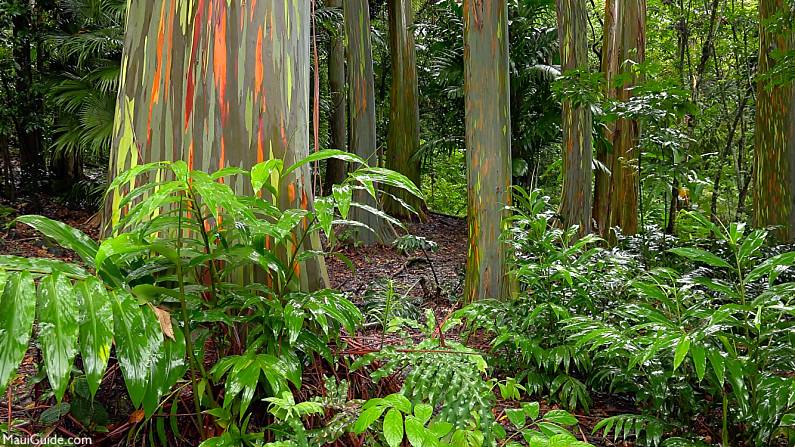
Area of Concern – West, East, Upcountry, Central Maui
• Dark shiny leaves with pink flowers.
• Triangular, paired seed pods.
Rubber vine smothers and restricts other plants from growing by winding around trunks, stems, and branches. Rubber vine is poisonous. When ingested, it can affect the heart, stomach, and intestines of humans and animals. The plant’s milky sap can cause rashes and blisters. The plant’s dust can cause coughing, nose swelling, and eyelid blisters.
Pampas (Cortaderia sp.) – Grass/Sedge
Area of Concern – West, Upcountry Maui
• Narrow leaves with sharp, serrated edges.
• White, purple plumes up to 13 feet tall.
Pampas grass forms dense monotypic stands. It spreads rapidly. Seeds are dispersed by wind up to 20 miles away. It can crowd out native plants, damage grazing lands, and create a fire hazard.
Veiled Chameleons (Chamaeleo calyptratus) – Lizard
Area of Concern – Upcountry Maui
• Bony shark fin-like shield on the head.
• Adults often have vertical stripes.
• Juveniles are bright green.
• Pale fleshy fringe from below snout to the base of the tail.
Veiled chameleons are larger than Jackson’s chameleon. Veiled chameleons can live and breed in more areas on Maui than the Jackson’s. These larger chameleons can capture small
birds in mid-flight. Veiled chameleons threaten Maui’s native birds, plants, and insects.
Miconia (Miconia calvescens) – Trees
Area of Concern – East Maui
• Large velvety leaves with purple undersides and three prominent parallel veins.
• Grows to 50 feet tall.
Miconia shades out and kills other plants trying to grow beneath it. If left unchecked, miconia will create a monotypic forest, destroying rain forests, pastures, and farmlands, and causing increased erosion and degradation of Maui’s healthy watersheds.
Mitred Conure (Aratinga mitrata) – Parrots
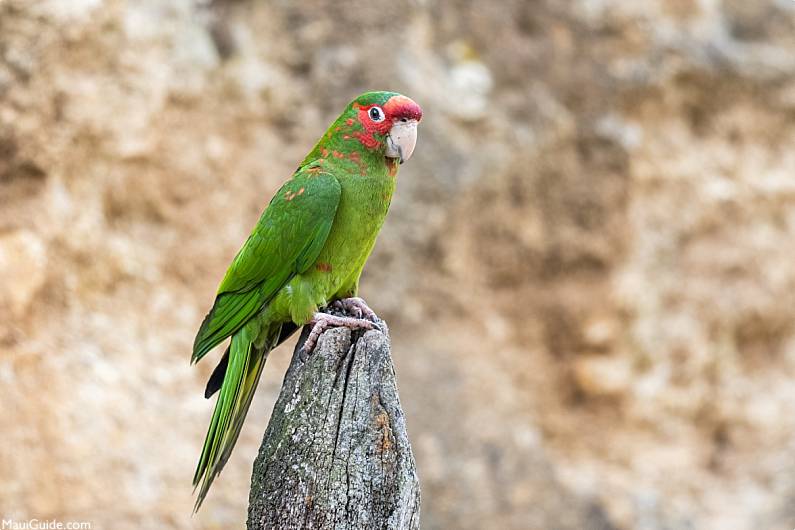
Area of Concern – Upcountry, West Maui
• Large (16-17″) green birds with red faces.
• Scattered red feathers on other body parts.
• Creamy-white eye-rings.
• Loud, raucous calls.
Mitered conures eat the seeds of invasive plants and can spread them into new areas. The conures can damage fruit and seed crops, and spread diseases and parasites to humans, birds, and domestic poultry. The conures can displace native seabirds from nesting burrows.
Want to learn more?
Maui Invasive Species Committee
P.O. Box 983, Makawao, Hawaii 96768
Phone: (808) 573-MISC (6472) Fax: (808) 573-6475
Email: [email protected]
The above information is accurate as of May 2022.
See more Hawaii Invasive Species.

